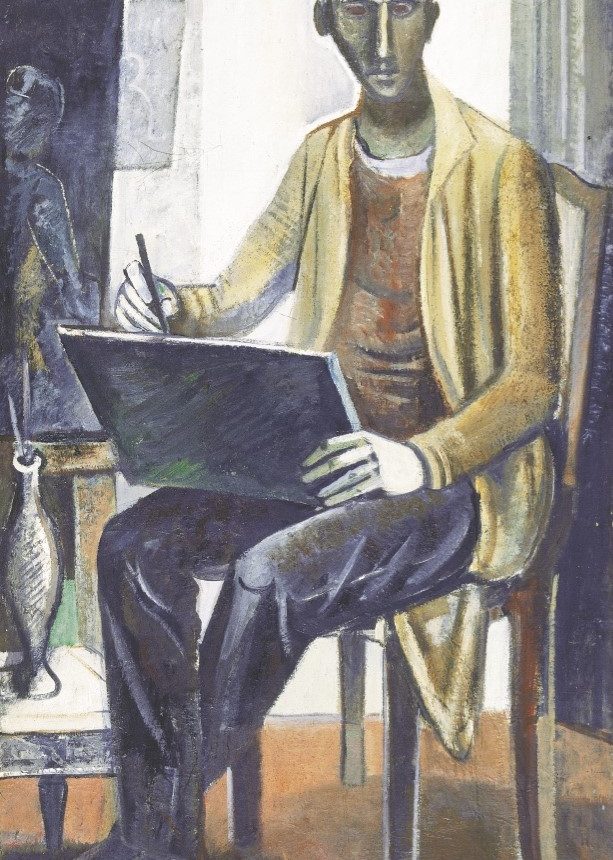Alexandre FASINI
January 2, 2019Michel FINK
January 2, 2019Adolphe FEDER (born Aizik Feder)
ODESSA (UKRAINE) 1885 – DEPORTED TO AUSCHWITZ 1943
After participating in the Bundist revolutionary movement, Adolphe Feder, the son of a merchant, left for Berlin. He then attended the Academy of Fine Arts in Geneva. He went to Paris in 1908, studied at the Académie Julian and in Henri Matisse’s studio. He adapted well to Paris, where he spent time at La Rotonde café and met Othon Friesz, Modigliani, and Jacques Lipchitz. Feder was an art lover and collected African and Naive art. His studio counted many sculptures and paintings bought at the flea market. His collection was confiscated during the war.
In 1923, he published drawings in the press and illustrated several books, including works by Joseph Kessel and Arthur Rimbaud. That same year, he organized a reception in honor of the Russian poet Vladimir Mayakovsky, which left a mark on Parisian bohemian society. Together with Mikhail Larionov and Ossip Zadkine, he was one of the most active members of the Russian Artists Association, which brought together the Russian artists living at La Ruche. Adolphe Feder enjoyed traveling and visited the south of France, Brittany, the Basque Country, and Algeria.
He went to Palestine in 1926, from where he brought back several paintings and drawings. He refused to flee with his friend the sculptor Jacques Loutchansky and stayed in Paris during the Occupation. He and his wife were arrested on June 4, 1942. After being interned for four months in the Cherche-Midi prison, he was transferred to Drancy and deported on February 13, 1943 on convoy number 48. He was murdered in Auschwitz. His wife managed to run away with an album of drawings he had done in Drancy.
Stories of Jewish Artists of the School of Paris 1905-1939
FRENCH-ENGLISH
Capitale des arts, le Paris des années 1905-1939 attire les artistes du monde entier. De cette période de foisonnement, un terme est resté, celui d'Ecole de Paris, qui recouvre une grande diversité d'expression artistique. Dans ce brassage dont Montparnasse est le creuset, un groupe se distingue : celui des artistes juifs venus de Russie, de Pologne et d'Europe centrale. Si leurs styles sont variés, un destin commun les rassemble : ils fuient l'antisémitisme de leur pays d'origine. Certains ont connu la célébrité dès les années 1920, tels Soutine, Lipchitz ou Chagall. D'autres n'ont pas eu le temps ou la chance d'y accéder. Près de la moitié a péri dans les camps de concentration nazis.
From 1905 to 1939, Paris attracted artists from all over the globe as the capital of the art world. This period of artistic proliferation became known as the School of Paris, and includes a great diversity of artistic expression. Within the teeming art world centred on Montparnasse, one group set itself apart: Jewish artists from Russia, Poland, and Central Europe. Although their styles were diverse, they shared the common fate of fleeing anti-Semitic persecutions in their home countries. Some became famous in the 1920s, such as Soutine, Lipchitz, and Chagall, while others did not have the time or the luck to gain renown. Nearly half of these artists died in Nazi concentration camps.





